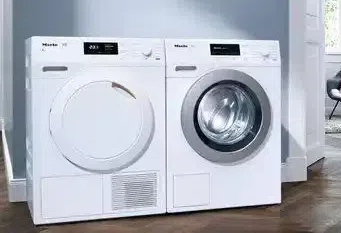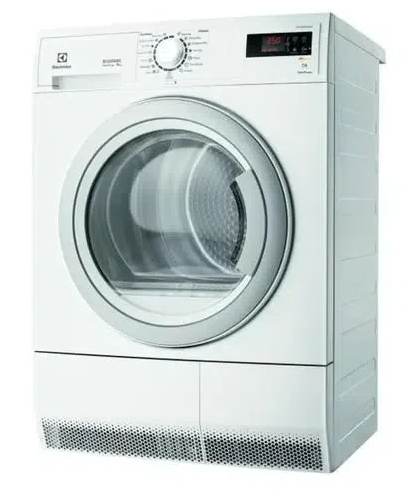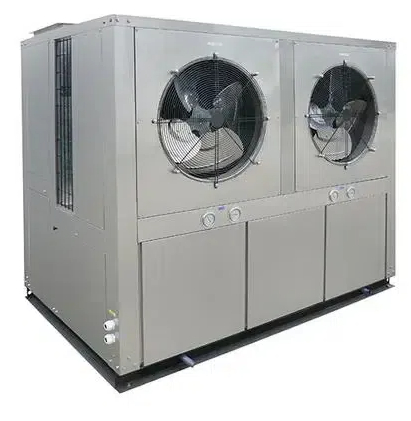
Content Menu
● Introduction to Heat Pump Dryers
● How Heat Pump Dryers Work
● Drying Time: What to Expect
>> Factors Affecting Drying Speed
● Energy Efficiency: The Heat Pump Advantage
● Heat Pump vs. Traditional Dryers: A Comparison
>> Heat Pump Dryers:
>> Traditional Dryers:
● Optimizing Drying Performance
>> 1. Proper Loading
>> 2. Pre-sort Laundry
>> 3. Use High-Spin Wash Cycles
>> 4. Clean the Filters Regularly
>> 5. Utilize Moisture Sensors
● Maintenance Tips for Heat Pump Dryers
● The Future of Clothes Drying Technology
● Conclusion: Balancing Efficiency and Convenience
● Frequently Asked Questions
>> Q1: Are heat pump dryers worth the extra cost?
>> Q2: Can heat pump dryers be installed anywhere in the home?
>> Q3: How do I know when my clothes are dry in a heat pump dryer?
>> Q4: Do heat pump dryers require special detergents?
>> Q5: Can heat pump dryers handle all types of fabrics?
Introduction to Heat Pump Dryers
In the world of laundry appliances, heat pump dryers have emerged as a game-changing technology, offering a more energy-efficient alternative to traditional tumble dryers. As consumers become increasingly conscious of their energy consumption and environmental impact, these innovative appliances have gained popularity. However, one question frequently arises: how long do heat pump dryers take to dry clothes? This comprehensive guide will delve into the intricacies of heat pump dryers, exploring their drying times, efficiency, and the factors that influence their performance.
How Heat Pump Dryers Work
Before we discuss drying times, it's essential to understand the fundamental principles behind heat pump dryer technology. Unlike conventional dryers that expel hot, moist air, heat pump dryers operate on a closed-loop system that recirculates air within the drum.
The process works as follows:
1. Air is drawn from the drum and passed through an evaporator, which cools and dehumidifies it.
2. The cooled air then moves through a condenser, where it's reheated.
3. The warm, dry air is circulated back into the drum to continue the drying process.
4. Moisture extracted from the clothes is collected in a reservoir or drained away.
This closed-loop system allows heat pump dryers to operate at lower temperatures than conventional dryers, which contributes to their energy efficiency but also affects drying times.

Drying Time: What to Expect
One of the most common concerns about heat pump dryers is the length of time they take to dry clothes. It's true that heat pump dryers generally take longer to complete a cycle compared to traditional vented or condenser dryers. However, the actual drying time can vary significantly based on several factors.
Typically, you can expect a heat pump dryer to take anywhere from 90 minutes to 3 hours for a full load of laundry. This is in contrast to conventional dryers, which might complete a cycle in 45 minutes to an hour. While this may seem like a significant difference, it's important to consider the trade-offs in terms of energy efficiency and gentler treatment of fabrics.
Factors Affecting Drying Speed
Several variables influence how long a heat pump dryer takes to dry clothes:
1. Load size and type: Larger loads and heavier fabrics will naturally take longer to dry.
2. Moisture content: Clothes that come out of a high-spin washing machine will dry faster than those from a low-spin cycle.
3. Ambient temperature and humidity: The dryer's performance can be affected by the surrounding environment.
4. Dryer capacity and power: Larger, more powerful models may dry clothes faster.
5. Program selection: Different drying programs are designed for various fabric types and dryness levels.
Energy Efficiency: The Heat Pump Advantage
While heat pump dryers may take longer to dry clothes, their energy efficiency is where they truly shine. These appliances can use up to 50% less energy than conventional condenser or vented dryers. This significant reduction in energy consumption translates to lower electricity bills and a reduced carbon footprint.
The energy efficiency of heat pump dryers is attributed to their ability to reuse heat and operate at lower temperatures. Traditional dryers generate heat, use it once, and then expel it, whereas heat pump dryers continuously recycle the warm air, making the most of the energy input.
Heat Pump vs. Traditional Dryers: A Comparison
To better understand the trade-offs between drying time and efficiency, let's compare heat pump dryers with their traditional counterparts:
Heat Pump Dryers:
- Longer drying times (90 minutes to 3 hours)
- Highly energy-efficient
- Gentler on clothes due to lower operating temperatures
- More expensive upfront but lower running costs
- No need for external venting
- Suitable for a wider range of fabrics, including delicates
Traditional Dryers:
- Shorter drying times (45 minutes to 1 hour)
- Less energy-efficient
- Can be harsher on clothes due to higher heat
- Lower upfront cost but higher running costs
- Often require external venting (for vented models)
- May not be suitable for all fabric types

Optimizing Drying Performance
While heat pump dryers inherently take longer to dry clothes, there are several strategies you can employ to optimize their performance and potentially reduce drying times:
1. Proper Loading
Avoid overloading the dryer. Optimal load size allows for better air circulation, which can significantly impact drying efficiency. Most heat pump dryers have a capacity between 7 and 9 kg, but it's best to fill them to about 70-80% of their maximum capacity for optimal performance.
2. Pre-sort Laundry
Group similar fabrics together. Lighter items like t-shirts and underwear will dry faster than heavy towels or jeans. By sorting your laundry, you can choose the appropriate cycle and avoid over-drying some items while others remain damp.
3. Use High-Spin Wash Cycles
The higher the spin speed of your washing machine, the more water is extracted from your clothes before they enter the dryer. This can significantly reduce drying time. Aim for spin speeds of 1200 RPM or higher if your washing machine allows.
4. Clean the Filters Regularly
Heat pump dryers have two filters: a lint filter and a heat exchanger filter. Regular cleaning of both filters ensures optimal airflow and heat exchange, which is crucial for efficient drying.
5. Utilize Moisture Sensors
Many modern heat pump dryers come equipped with moisture sensors that can detect when clothes are dry and automatically stop the cycle. Using these sensor-driven programs can prevent over-drying and save energy.
Maintenance Tips for Heat Pump Dryers
Proper maintenance is key to ensuring your heat pump dryer operates at peak efficiency and maintains its performance over time. Here are some essential maintenance tips:
1. Clean the lint filter after every use
2. Clean the heat exchanger filter monthly or as recommended by the manufacturer
3. Wipe down the drum interior regularly to remove any residue
4. Check and clean the condenser unit every few months
5. Ensure proper ventilation around the dryer to maintain optimal operating conditions
6. Schedule professional maintenance annually to address any potential issues
The Future of Clothes Drying Technology
As technology continues to advance, we can expect further improvements in heat pump dryer efficiency and performance. Manufacturers are constantly working on innovations to reduce drying times while maintaining or even improving energy efficiency.
Some emerging technologies and features to look out for include:
- Improved heat exchange systems for faster temperature adjustments
- Advanced moisture sensing capabilities for more precise drying
- Smart connectivity for remote monitoring and control
- Hybrid systems that combine heat pump technology with other drying methods
- Self-cleaning condensers to reduce maintenance requirements
Conclusion: Balancing Efficiency and Convenience
Heat pump dryers represent a significant step forward in laundry technology, offering substantial energy savings and gentler fabric care. While they do take longer to dry clothes compared to traditional dryers, the benefits in terms of efficiency and clothing preservation often outweigh the extended drying times for many users.
As you consider whether a heat pump dryer is right for your household, weigh the factors of energy savings, environmental impact, and clothing care against the longer drying cycles. With proper use and maintenance, a heat pump dryer can be an excellent investment in both your laundry routine and your home's energy efficiency.

Frequently Asked Questions
Q1: Are heat pump dryers worth the extra cost?
A1: While heat pump dryers have a higher upfront cost, they can be worth the investment due to their significant energy savings over time. They use about 50% less energy than conventional dryers, which can lead to substantial reductions in electricity bills. Additionally, they're gentler on clothes, which can help extend the life of your garments.
Q2: Can heat pump dryers be installed anywhere in the home?
A2: Heat pump dryers are more flexible in terms of installation compared to vented dryers. They don't require external venting, which means they can be installed in various locations within your home. However, they do need adequate space around them for proper air circulation and perform best in well-ventilated areas.
Q3: How do I know when my clothes are dry in a heat pump dryer?
A3: Most modern heat pump dryers are equipped with moisture sensors that detect when clothes are dry. These sensors allow the dryer to automatically stop the cycle when the desired dryness level is reached, preventing over-drying and saving energy. Many models also have adjustable dryness settings, allowing you to customize the final dryness of your laundry.
Q4: Do heat pump dryers require special detergents?
A4: Heat pump dryers don't require special detergents, but it's important to use the appropriate amount of detergent in your washing machine. Excess detergent can leave residue on clothes, which may affect the dryer's performance and increase drying times. Always follow the manufacturer's recommendations for both your washing machine and dryer.
Q5: Can heat pump dryers handle all types of fabrics?
A5: Heat pump dryers are generally suitable for a wide range of fabrics, including delicates, due to their lower operating temperatures. However, always check garment care labels and use the appropriate dryer settings for different fabric types. Some items, like rubber-backed bath mats or clothes with sequins, may not be suitable for tumble drying and should be air-dried instead.












